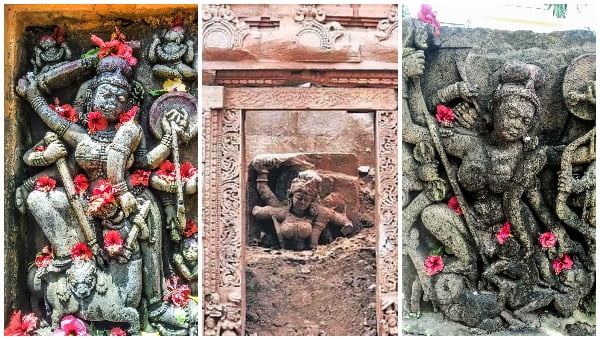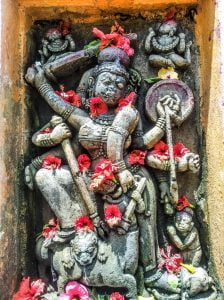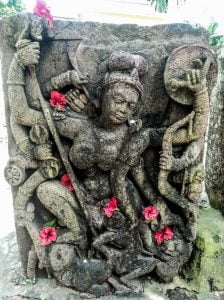Researchers Dispute Claims On Mahisasuramardini Idol Found In Bhubaneswar

Bhubaneswar: The discovery of the Mahisasuramardini idol by the excavation team of the Archaeological Survey of India (ASI) on the Suka Sari Complex in the Old Town has not come as a surprise to many heritage experts.
The idol was discovered while clearing the Garbhagriha (sanctum sanctorum) of a partially-buried temple at the rear of the present Bhabani Shankar temple.
According to Anil Dhir, who has been at loggerheads with the government on the ongoing beautification project, there are many such sites in the areas cleared by the authorities last year. That such a temple existed inside the complex was informed to the ASI and the state government many a time, in spite of this rampant excavations were carried out and many valuable carved panels were destroyed or dumped off, he alleged.
“Why has not the Ground Penetration Radar survey report of the entire area, conducted by IIT Gandhinagar last year, has been made public?” Dhir further questioned.
There are many more such buried structures, broken temples, idols and images in the vicinity, he added.
Also Read: Mahisasuramardini Idol Found During Excavation Behind Sari Deula In Bhubaneswar
According to heritage explorer and expert Deepak Nayak, the speculation that the image was a 1400-year-old idol is wrong. “Only the upper portion of the idol has been excavated. The age of any Mahisasuramardini sculpture can be identified considering the iconography of the demon the goddess is slaying. In Odishan iconography, the demon in the form of a buffalo, or in a composite form having the head of a buffalo and a human form can be assigned to a period prior to the 9th/10th Century C.E., during the rule of the Somavamsis dynasty over Odisha. In the later Somavamsi and Eastern Ganga periods, the demon was depicted in human form,” he said.


To determine the age by only a portion of the upper portion is wrong and it can be determined only after the sculpture is fully excavated. The upper portions of all Mahisasuramardini images look similar, it is the base end that can define the construction age, he added.
The ASI has cordoned off the area, but on an early morning visit to the site, no guards were found. Many of the valuable images that were revealed during the beautification project were carted off, the present site should be secured with proper security guards, they opined.

Comments are closed.